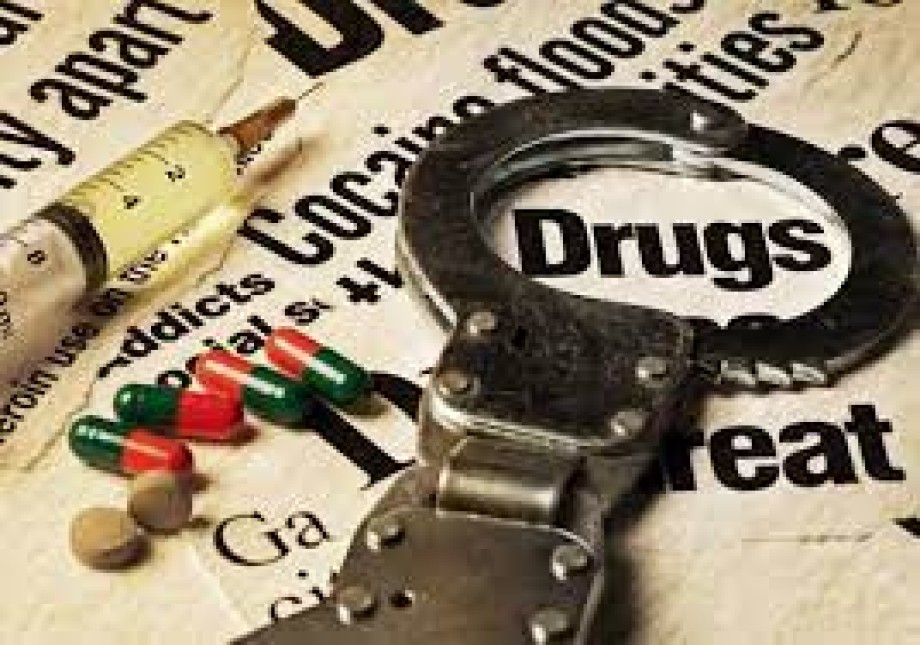Drug abuse in Leh: Rising addiction rates among youth raise concerns Authorities arrest 47 in two years, confiscate substantial amounts of Charas, Ganja, brown sugar and other drugs

Amidst ongoing development and modernization, Leh is grappling with an alarming increase in drug and substance abuse. The region has witnessed a disturbing rise in drug-related cases, sparking growing concerns among residents and authorities alike.
In 2023, 16 cases were filed under the Narcotic Drugs and Psychotropic Substances (NDPS) Act, leading to the arrest of 25 individuals. In 2024, 15 additional cases were registered, with 22 arrests. Authorities seized a range of narcotics, including 3 kg 124 gm of Charas, 2 kg 429.05 gm of Ganja, 12 gm of Brown Sugar, 400 capsules of Spmprxt, 119 capsules of Spasmo Proxyn, 216 capsules of Sigma Spasmo, and 6.688 gm of semi powder MDMA in 2023. In 2024, the seizures included 5 kg 500.82 gm of Charas, 8 kg 602 gm of Ganja, 99 tablets of Nitrosum, and 400 capsules of Spmprxt, reflecting a concerning rise in the availability and distribution of illegal substances.
Senior Superintendent of Police (SSP) Shruti Arora stated, “We have been working actively against the drug menace in Leh. The accused include both locals and non-locals. In 2023, we arrested eight locals and 16 individuals from outside, including from Himachal Pradesh, Jammu & Kashmir, Bihar, Tibetan refugee communities, and Nepal. In 2024, the figures stand at five locals and 17 non-locals.”
SSP Arora further explained, “A drug addict often starts with very small quantities, and it is our duty to catch the drugs mafia while also focusing on the rehabilitation of the victims.” She emphasized that establishing the supply chain after arrests is crucial for dismantling drug networks. “I appeal to the public to come forward with any information that might help us break this nexus,” she added.
Dr. Padma Angmo, a psychiatrist at SNM Hospital, Leh, expressed concern over the evolving nature of drug abuse in the region. “In 2018-2019, addiction was largely limited to cannabis, alcohol, and tobacco products. However, in the last two to three years, we have seen a disturbing rise in cases involving IV drugs and opioids, particularly among young people in their early twenties,” she said. Dr. Angmo noted that many youths had been using drugs for two to three years, often starting with tobacco and progressively moving on to more dangerous substances.
Dr. Angmo highlighted several contributing factors to the drug problem, including easy accessibility of drugs despite their high cost—reportedly around Rs. 7,000 per day. “One bad habit leads to another. Once an individual becomes addicted, they may resort to illegal activities to obtain drugs,” she explained.
The availability and easy accessibility of drugs are major factors contributing to the rise in substance abuse cases. Dr. Padma Angmo noted that while speaking to individuals seeking help at the hospital, many admitted that drugs are easily accessible but very costly, with some spending up to ₹7,000 per day.
Dr. Padma emphasized the vicious cycle that addiction creates, stating, "One bad habit leads to another. Once an individual becomes addicted, they will go to any length to obtain drugs, often resorting to illegal activities."
Mental illness and substance abuse share a bidirectional relationship, with many factors contributing to the rise in addiction. A common factor, Dr. Padma observed, is family dynamics. She shared that some children have cited unrest between their parents and negative family environments as key drivers pushing them toward substance abuse.
She also highlighted the importance of parental awareness, pointing out that many parents show little interest in their children's lives—what they are doing, their feelings, or their social circles. "Parents must closely monitor their children's behavior, friendships, and social interactions," Dr. Padma stressed. She advised parents to be alert for signs such as facial darkening, sudden weight loss, marks on the body, aggressive behavior, and social withdrawal.
Recognizing these early warning signs can make a significant difference. "I urge parents to engage with their children, spend quality time with them, and keep track of their activities," Dr. Padma concluded. The District Police Leh has been actively conducting awareness programs across various levels. SSP
Shruti Arora stated, "Our primary goal is to establish the supply chain after arresting the accused so we can trace where the drugs are coming from and where they are being distributed. I urge the public to come forward and share any information they may have to help us break the drug network."
Conviction rates remain a significant concern, with rumors circulating that many individuals involved in such crimes are released without consequences.
Addressing the issue, SSP Arora remarked, "I want to express my gratitude to the judiciary for their support. In 2024, out of 15 cases, six resulted in convictions. This is encouraging for us as it strengthens our resolve to improve investigations and sends a clear message to society: those involved in illegal activities will not be spared."
The source of information provided by the public is kept anonymous and confidential. "I encourage people to come forward and share any information. Together, we can work towards making the district a safer and better place," SSP Arora concluded.





